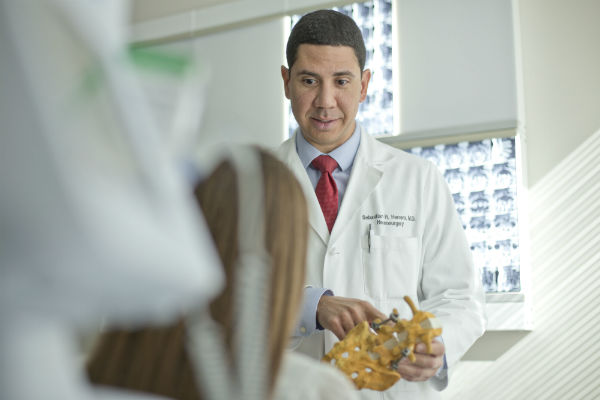
The procedure is generally used to treat multilevel cervical stenosis, in which bone spurs create spinal cord pressure. It may also be recommended for patients with other degenerative spine conditions such as herniated disks, or for tumors or infections of the spine. Cervical corpectomy is an extensive surgery and is usually only recommended for patients with significant spinal cord problems that cannot be resolved with anterior cervical discectomy, and when symptoms such as severe pain, extreme muscle weakness, and difficulty with motor function are present.
Procedure
During the procedure, the patient is under general anesthesia, and the surgeon makes an incision in the front of the neck to allow access to the cervical spine. The surgeon uses small instruments to remove the disks above and below the vertebral body and to separate the vertebral body from the back of the vertebra. The bone graft (either donated bone, bone graft substitute or bone taken from the patient’s hip) is then placed and affixed to stabilize the spine before the incision is closed. A special brace or collar will be placed by the surgeon to provide further stability, and will be worn for approximately six weeks until it is removed by the surgeon.
Recovery and Physical Therapy
Once surgery is complete, the patient will remain in the hospital for monitoring and treatment of postsurgical pain with medication. It is normal for continued pain immediately after surgery, particularly around the incision. Recovery time in the hospital varies from patient to patient, and the length of stay is dependent upon a number of factors, including how extensive the surgery.
Most patients begin walking and sitting in a chair the day after surgery. Outpatient physical therapy may be prescribed to help with pain and inflammation and to regain function and control of the neck muscles. The surgeon will coordinate a specific postoperative recovery plan for all patients based upon the type of work they perform, their preoperative activity level, the extent of their surgery and how quickly they are healing.
Contact Us
Please fill out the fields below, and we will contact you.